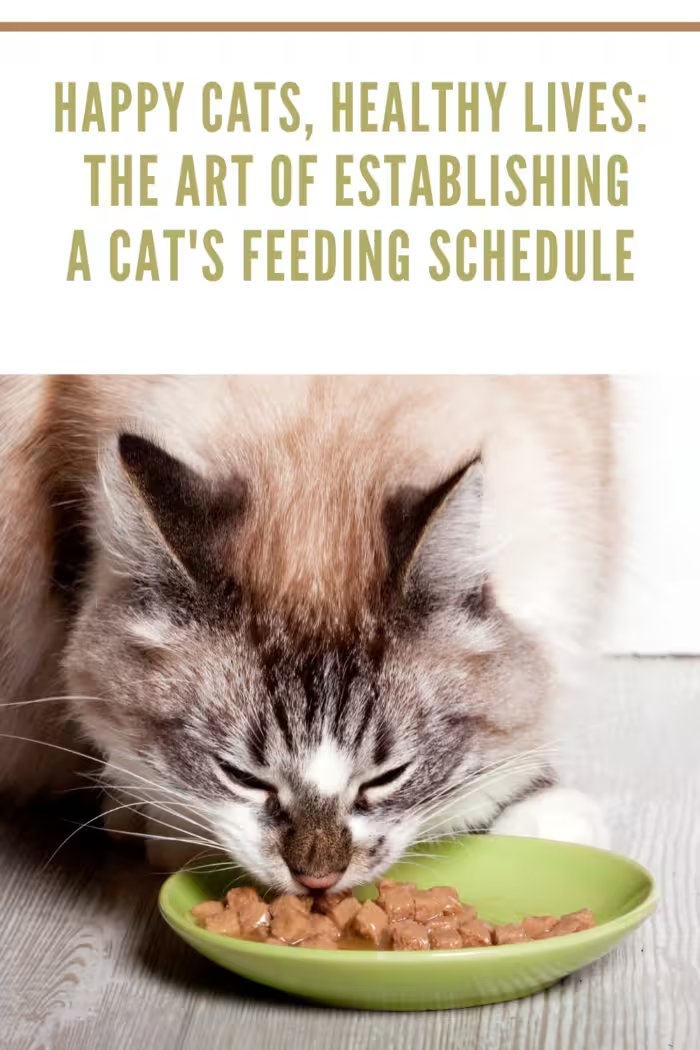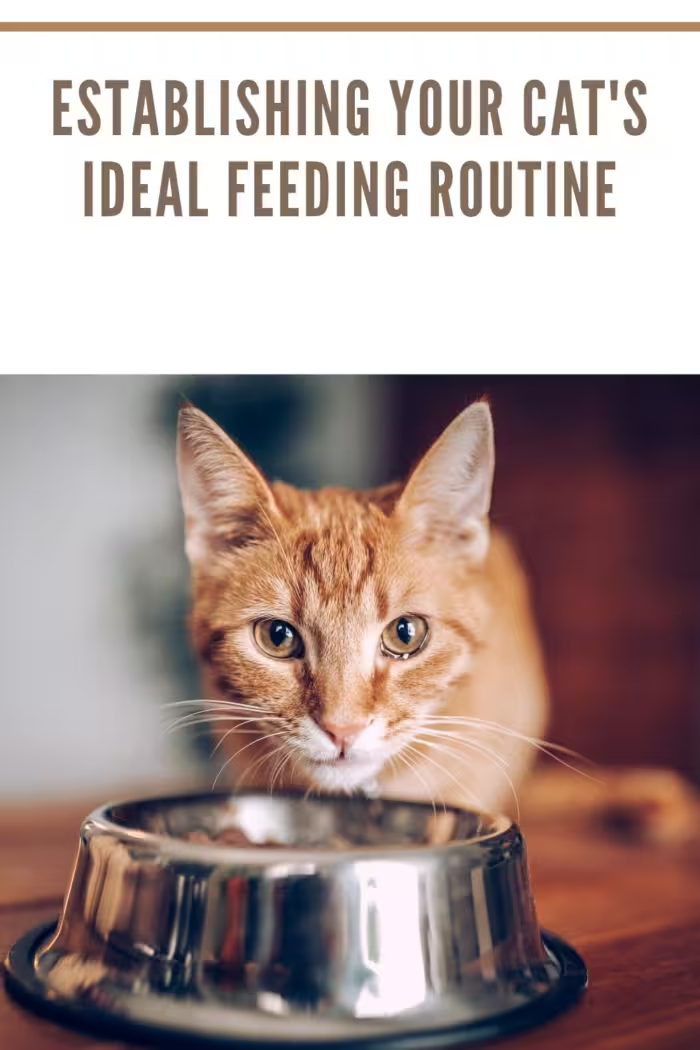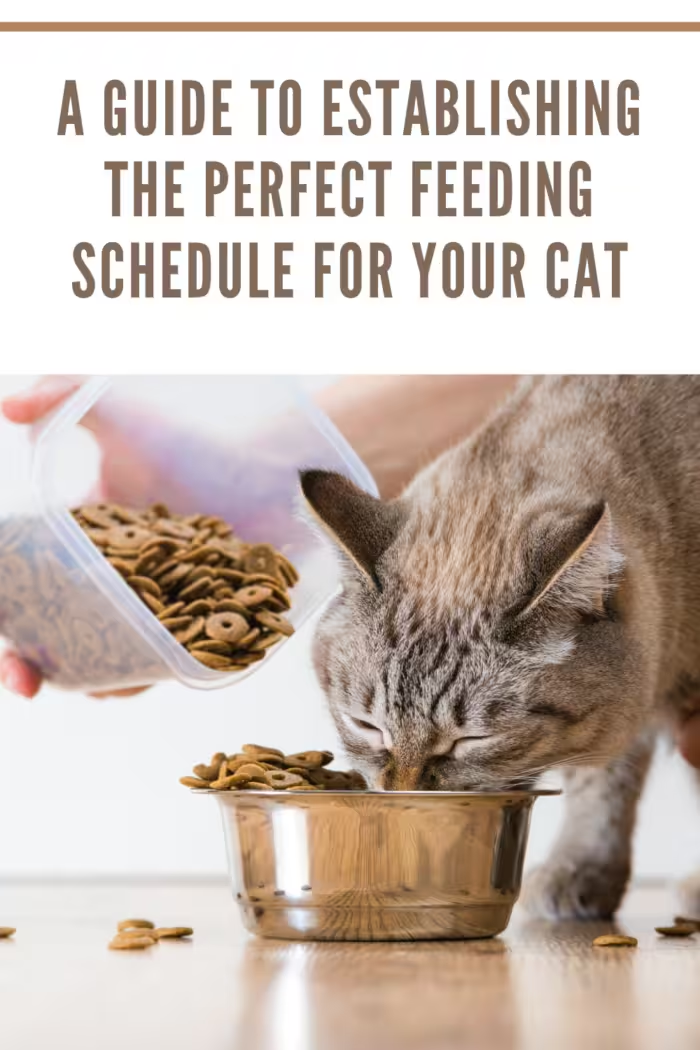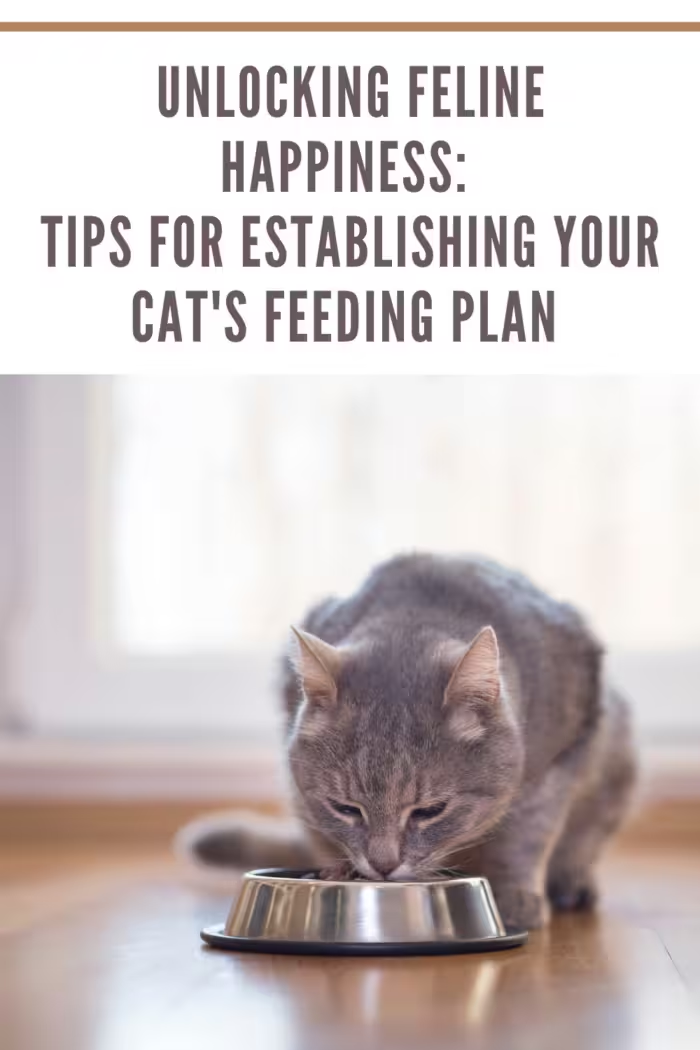Cats, known for their enigmatic and self-reliant nature, have an unmistakable passion for eating. Whether they’re cozily curled on your lap, engaged in lively play with a feathered toy, or peacefully dozing in a sunbeam, you can be sure they’re consistently eager for a satisfying meal.
Being a conscientious cat guardian involves more than simply supplying food; it entails establishing a reliable and organized feeding routine for your cat. This not only nourishes them but also contributes to their well-being, and contentment, and strengthens the connection between you and your furry friend. Learn more about setting up a feeding routine for your cat, ensuring their health and happiness.

Establishing Your Cat’s Feeding Schedule
Choose the Right Cat Food
First, let’s discuss the foundation of your cat’s feeding schedule – the type of food. There are three primary options: dry kibble, canned/wet food, and the raw food diet.
- Dry Kibble: This is convenient and has a long shelf life. However, it may not provide enough moisture, essential for your cat’s urinary health. If you opt for kibble, consider mixing it with wet food.
- Canned/Wet Food: Cats often prefer wet food due to its high moisture content, and it’s an excellent choice for cats with urinary tract issues. Remember that it has a shorter shelf life and can be pricier.
- Raw Food: Some pet owners advocate for a raw cat diet, believing it to be a more natural and wholesome choice. This diet replicates the natural fare of wild cats, which is in line with their obligate carnivore nature, making it a preferred option for many cats. Nevertheless, it’s crucial to consult a veterinarian before making the switch to a raw diet, as an improper balance can pose risks.

Age Matters
Your cat’s age plays a significant role in determining their feeding schedule. Kittens require more frequent meals (up to four times daily) to support their growth and high energy levels (Cornell). As they age, you can gradually reduce the frequency to two meals a day for adults. Senior cats might benefit from smaller, more frequent meals to accommodate their changing metabolism.
Consistency is Key
Cats thrive on routine. It’s essential to feed your cat at the same time each day so they know what to expect. Whether it’s morning and evening meals or midday and a late-night treat, adhere to a routine that suits both you and your beloved cat. This consistency helps reduce anxiety and ensures they receive the necessary nutrition.

Portion Control
According to PetMD, obesity is a common issue in cats, so monitoring portion sizes is crucial. Seek guidance from your veterinarian to establish the correct portion size based on your cat’s age, weight, and activity level. Steer clear of free-feeding, which involves leaving food out continuously, as it can result in excessive eating. Use measuring cups to ensure accuracy and avoid overfeeding.

Special Considerations
Certain cats might require unique diets, possibly due to allergies or sensitivities. If you suspect your cat has specific dietary requirements, it’s advisable to consult your veterinarian to develop a personalized feeding regimen. Additionally, stay vigilant for alterations in your cat’s behavior or well-being, as these signs might suggest a necessity to modify their feeding routine.
Establishing a feeding schedule for your cat is a fundamental aspect of responsible pet ownership. It ensures your feline friend receives the nutrition they need and helps maintain their overall health and happiness.
